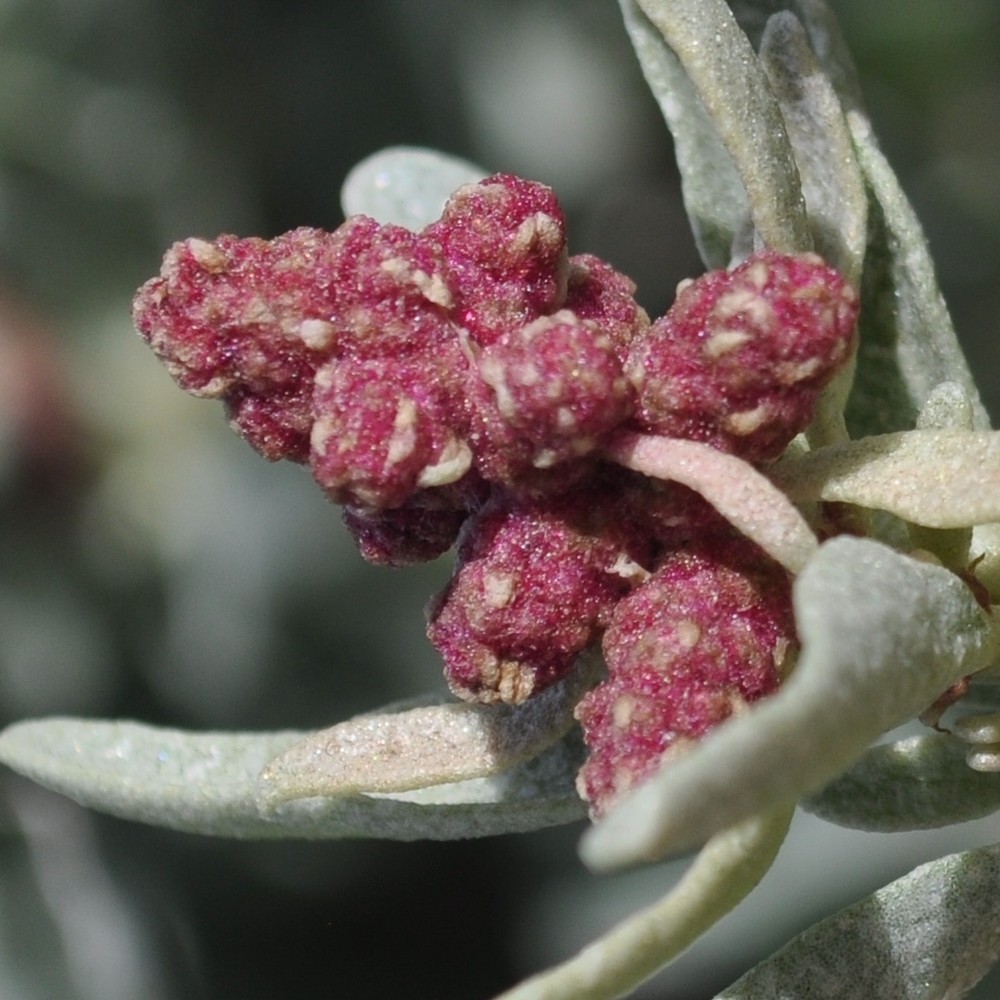Grey Saltbush
(Atriplex cinerea)

Description
Atriplex cinerea, commonly known as grey saltbush, coast saltbush, barilla or truganini, is a plant species in the family Amaranthaceae. It occurs in sheltered coastal areas and around salt lakes in the Australian states of Western Australia, South Australia, Tasmania, Victoria and New South Wales. Atriplex cinerea is a prostrate to erect, heavily branched, leafy shrub growing up to 1.8m high and up to 2.5 m wide. Stems are initially ridged and angular, becoming woody with age. The leaves are elliptic to oblong. 40 mm long, 15 mm wide. Petioles are 1–3 mm. Leaves alternate and are silver or grey-green in colour. The plant is covered with bladderlike hairs. The species is monoecious or dioecious. The male flowers in purple globular clusters (but look yellow when in bloom) and are on simple or branched spikes. The unbranched florets are attached to the stem. The male flower lacks bracts or bracteoles. The female plant also flowers, but more discretely in the leaf axil, (appearing as two small pink tepals in image below). Perianth is absent. Bracteoles 2mm diameter. Flowers from September until March. Fruits from October until January. The distribution is highly coastal. As a result, > 95% of recorded occurrences in Australia are on the coast (according to Atlas of Living Australia). It is found in Western Australia, South Australia, Victoria, Tasmania and NSW. Established on coastal sandy soils, specifically preferring bays and inlets such as Western Port Bay and Port Phillip Bay. The natural range and density of this species has decreased as major cities (Melbourne/Sydney/Adelaide) and subsequent suburbs have expanded along the coast of Australia. The distribution extends to the Bass Strait Islands and Tasmanian coastline. The presence of A. cinerea on these islands may suggest this species had a wider distribution in times of lower sea levels. It can also be found further abroad in Lord Howe Island (although described as having a “very restricted distribution”) and in New Zealand. In the past, A. cinerea had been considered an adventive species to New Zealand. However a more recent study provided evidence, and accepted A. cinerea as a vagrant species indigenous to New Zealand. Evidence provided included the movement of fruits by near-shore currents as the most likely method of seed dispersal.
Taxonomic tree:







